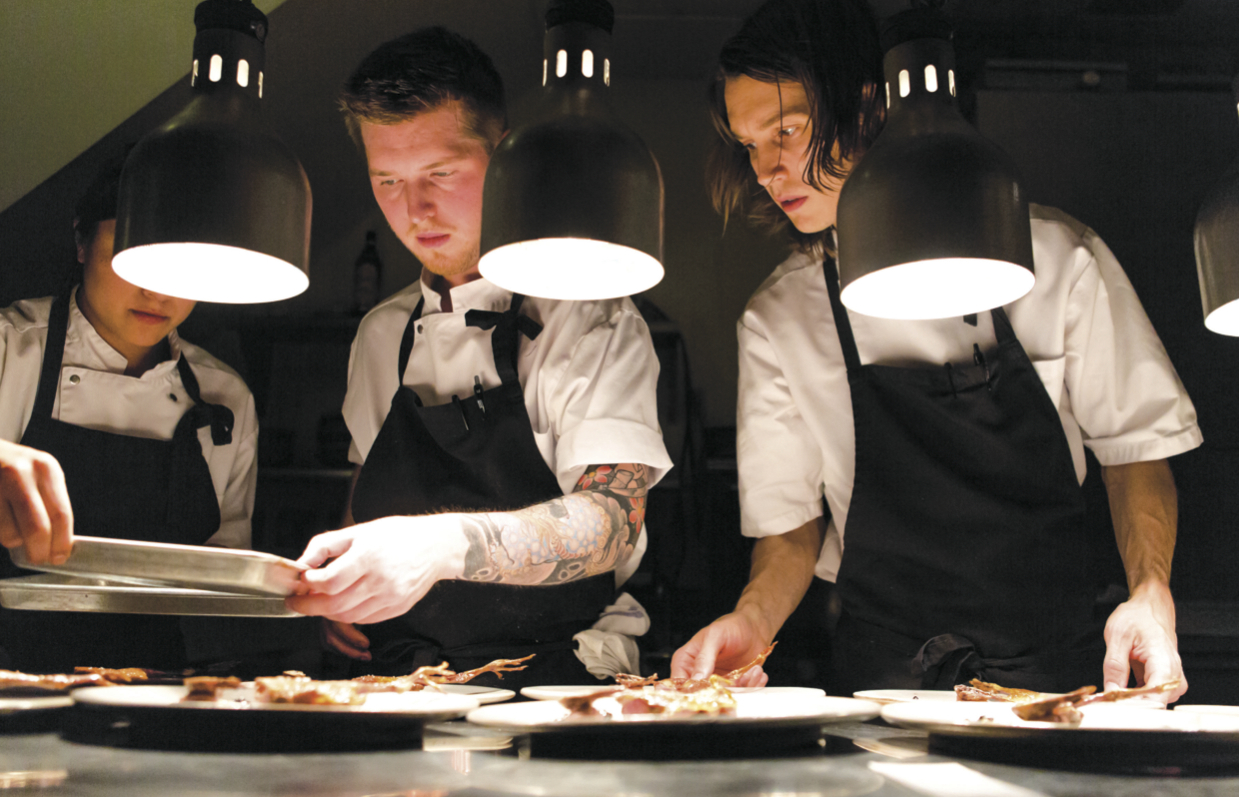Remarkably, Fredrick Berselius found Kinfolk, the multi-city design collective that hosts his Michelin-starred Scandinavian restaurant, by accident.
A mishmash of the natural (twigs, tinctures, bird prints and weathered bones) and the new (turntables, block prints, bicycles as art), you’d think the space was custom-made for the Swedish-born chef ’s Nordic-forest-food-meets-tasting-menu-meets-new-Williamsburg cooking. But in 2012 Berselius’s Manhattan restaurant project had fallen through, and all the chef — who has cooked at Corton, Aquavit and Per Se — wanted was a part-time kitchen to cook in until he secured another.
“There must be some warehouse, some café,” Berselius recalls thinking, out scouting around the city on his Vespa. Luckily, Kinfolk was a little of both: Its freethinking owners turned their studios into hangouts serving coffee by day, drinks and dancing by night. Berselius started a three-nights-a-week pop-up in between. Called Frej, it was a partnership with chef Richard Kuo that proved so popular he decided to stick around and run a real restaurant. Michelin stars, and Bon Appétit’s list of the best new restaurants in America, soon followed.
Joining a handful of haute kitchens like Bianca in Bushwick or the Elm around the corner, Aska (it means “ash,” in Swedish) is a step beyond the more rustic fare of many Brooklyn menus. With only an immersion circulator, a few induction burners and a small tabletop oven, Berselius is now at the forefront of this city’s New Nordic cooking scene, creating carefully composed meals of three, seven or 10 courses apiece, all served on stoneware handcast by a potter in the Palisades. (The tiny kitchen is also home to the stairway to the Kinfolk offices upstairs, leading to foot traffic during daytime prep. “After a while,” says Berselius, “you get used to it.”)
Each of Aska’s painstakingly composed plates seem to tell a story, as if each dish were a chapter in some alpine fable or fairytale played out in shoots, roots and leaves. A quartet of charred Ruby Crescent potatoes sit like logs around a campfire in a pool of tangy reduced whey, topped with tiny nasturtiums, a kiss of juniper oil and thin slivers of pale-pink house-cured beef. A silver-white circle of warmed local oysters is a wood nymph’s crown, topped with tiny foraged chickweed, herb oil and papery slivers of salsify both pickled and dried, the latter looking like tiny dried rose petals. Raw scallops are paired with little brown “mushrooms” of roasted leek tops, their polka dots formed from slices of garlic scapes pickled the past June. Brittle shards of rye flat-bread — like sails from a Viking ship — arrive with a cloud of salted sweet cream butter.
Berselius — quiet and slender, he’s let his hair grow like a SoCal skater since leaving Manhattan kitchens — says he originally moved to New York after high school with plans to be a graphic designer. But the school misplaced his application, and a café job led to his current career. He put in time at kitchens with a mandated respect for technique and ingredients, but what he does likely began in the deep forests of Sweden, where his grandfather was a naturalist and a forager. After taking a few trips across our own rivers and through the woods just beyond, Berselius realized the similarities of what grew in both his homeland and his adopted terrain.
Today the chef will break through the snow to find a nest of baby chickweed, layer whole dried chamomile seed pods over slow-cooked oxtail or add a piney bite of spruce over a scoop of milk sorbet. Indeed, much of the joy in Aska’s cooking derives not just from the seasonal or the local, but from Berselius’s delight in the slow change in the soil as the garlic mustard grows or the fiddleheads sprout or even the sad day when those spruce tips — the true flavor of the woods — finally grow too big to eat.
More than we could fit to print: Find a slideshow of gorgeous Aska photos here.
Photo Credit: Vicky Wasik






